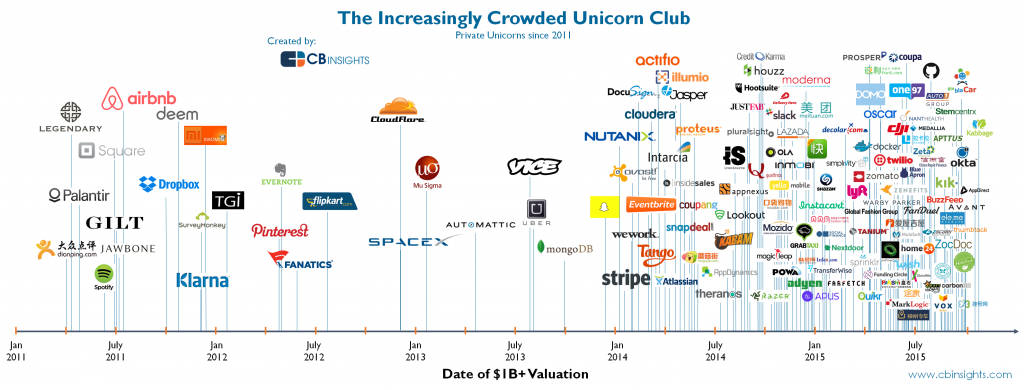Why agile? Does it apply to us? And what about PM?
| Jan Dolezal

Basically, there is probably no conference, professional forum, blog, etc., where agile, agility, business agility, etc. would not be addressed at least in part. Why does agile flood the debate and practice in many companies and other organizations so much? Is it just a fashion wave, another buzzword? Or something bigger? Isn’t it just a reflection of the fact that we are not able to plan and implement projects by standard methods and so we resort to some solution that should save us? Or is it all a little different?
Why does the agile “hit” really many of us?
Because the world has changed. It is faster, more turbulent, more VUCA (volatile, uncertain, complex, ambigious). Entire business sectors can change completely in a matter of months.
In January 2007, Apple introduced the iPhone. In March of that year, Nokia (Who That? Aha – then the dominant mobile maker) bought Navteq for $ 8.1 billion (!!!). It dealt with car navigation and then dominated the street sensor market. HW elements that monitored the level of traffic and possibly diverted navigated cars to other routes. With these sensors, Nokia intended to dominate the navigation market to compete with Google and Apple. At the same time, a small startup Waze was created in Israel…
Waze doesn’t own anything. It does not have to costly maintain and manage the network of HW sensors. Their upgrade would be at least in the order of tens of millions of USD. Each Waze user has their own sensor – a mobile phone from which the application collects traffic data. It has access to data from tens of millions of sensors around the world, which did not cost Waze a penny.
In 2012, Nokia’s market value fell from $ 140 billion to $ 8.2 billion at the price at which Navteq had previously been purchased. On the other hand, Waze was bought by Google for $ 1.1 billion in 2013, with less than a hundred employees and de facto no assets or infrastructure. A nice allegory of David and Goliath, isn’t it?
Business intruders and unicorns
Salim Ismail describes this in his book “Exponential organizations” as a phenomenon associated with an exponential increase in technological possibilities. Once something can be converted into data, information, it is possible to build a very small startup around it and completely change the rules of an industry. A turning point was the advent of cloud technologies. You no longer have to own and operate expensive infrastructure. But you are scaling up cloud services as needed … The necessary HW are mobile phones, which are de facto constantly connected to the Internet today.
Therefore, since about 2014, the number of new companies that have exceeded the value of USD 1 billion since its establishment has also increased rapidly. The so-called unicorns. Usually (at least at the beginning) a small startup that comes up with a new business model and significantly affects or changes the established order. And very quickly. The exponential organizations described by Salim are able to do so within a year …

In the IT world, this is a certainty today. Whoever does not become a company with a significant degree of agility, based on delivering value (value driven) with the customer in the center of interest (customer centric), very FAST, will not survive or will only live.
However, it also applies to many other fields – eg transport (Uber, BlaBlaCar), logistics (Coyote logistics – Uber in freight transport), accommodation (Booking, Air BnB), TV, video and music industry (Netflix, Spotify), banking (Revolut, N26),… need to continue? Did you know, for example, that Kodak (Who? 😊) has the first patent for a digital sensor and photos? Kodak already had a digital camera in 1975 (!) And the 1994 Apple QuickTake had an Apple sticker, but was manufactured by Kodak… whose management could not imagine a world without photo film… (what?).

Where “intruders” lurk
You say, okay, but there are things that can’t be changed so easily. For example, the supply of electricity and other commodities. Seriously? Recently, the media received information that companies are already cheaper (price per kW) to produce their own electricity (solar systems, etc.) than to buy it… For example, a roof tile with the PV function was introduced. Or domestic hydrogen producers for fuel cells. Etc. Still expensive today, but Moore’s Law applies here as well. The price / performance ratio is developing exponentially. A 3D printer cost $ 40,000 ten years ago. Today it is $ 100 (thanks to customs a little more, but still). Consumer goods.
The development and growth in the given industries, which are thus “affected” by exponential technology, is no longer linear and companies are no longer growing through acquisitions and do not have the strength of their size. The dynamics is exponential and complex. And which industry today is not affected by any exponential technology? These are not only 3D printing, but also industrial robots, Interenet of Things (IoT), drones, biotechnology (the price for a DNA sequencing machine has a similar course as for 3D printing), etc.
It is clear that the approaches that ensured success in the 20th century are doomed to failure in the 21st century. While 100 years ago, the life of an organization in the S&P 500 was some 67 years, in 2015 it was only 15 years. This means that about 40% of these Fortune 500 companies will no longer be in 2025.
Why does agile hit even classic PM?
Of course, there will still be an area in which it will make the most sense to proceed in the style of classical, predictive project management. E.g. building a bridge in short development cycles doesn’t make much sense. The CYNEFIN model describes this region as a complicated domain. The area of so-called known unknowns, in which you need an expert who analyzes the given area and proposes a solution. This is then implemented. The predictive project approach, the waterfall, corresponds to this. And it still makes sense in such a context.
However, this area is beginning to shrink dramatically as the environment becomes faster and more complex. The PM waterfall approach here becomes too slow and unable to deliver value on time (or the right one). A clear trend in classical PM is rather iterative and incremental life cycles – which is actually a form of agility, although not as strong as SCRUM (and therefore, by the way, in our basic training Project Management step by step we teach these more flexible approaches if we want provide meaningful knowledge and skills applicable at present).
PMI, a bastion of conservative approach, has also released an Agile Practice Guide along with the 6th version of its PM BoK 2017 standard. Or in 2019 the third edition of its “Practice standard for Work Breakdown Structures” (the second edition is from 2006!). And what’s new in the third version? Especially the use of WBS in iterative, incremental and agile life cycles. This was not the case at all in the second version … There is also a direct mapping to the Agile practice guide, etc. In other words, PMI already understood why agile must be included in its standard if it wants to survive. The world is walking in an agile way.
So what should you get out of it?
Overall, it becomes necessary to significantly shorten the feedback cycle to verify that we are doing the right thing. That we deliver something that is of value to the customer. This is the essence of agility (in Agile and SCRUM training, the game lego4scrum works great for explaining this principle, which really opens the eyes of many). And of course agile is something that needs to be mastered. Unfortunately, there are many very unsuccessful attempts to see – as we describe here, for example.
And all this applies on a company-wide level. Implementing a project today, the assignment of which arose sometime a year ago, is most likely nonsense that will not turn out well. If we do not adjust the assignment according to the new conditions and we will not do it in the shortest possible cycles even during the implementation. We are entering a period of visions and meaning rather than SMART goals and fixed indicators. Not to mention the obsolescence of the command and control method of managing the entire organization (this is also addressed, for example, in the Team leadership training). Today, OKR and similar routing methods are current, while personal KPIs are in the dustbin of history. This is the answer to the question of why agile.
It is necessary to think holistically
It is important to realize that this applies to the whole organization. It can easily be the bearer of predictive projects, if it makes sense. However, it is likely that much of the agenda will go in more agile ways. There is no time to develop the product for two years, when the start-up from the garage can do it in two months and through the AppStore, Amazon, etc. the service is able to distribute it worldwide (and Foxconn may produce as many pieces as needed, if it is HW and Amazon or Alibaba will be happy to deliver them).
And by the way, in companies where agile works well, the corporate culture is also usually very positively evaluated. And overall, these places are considered the best for work. So the clever ones want to do it there. Do you want them too?
That is why all the managements that are in the senses today incline agility, and therefore business agility in all cases. It is the future. So be prepared!
About author

Jan Dolezal
He currently deals with agility in organizations, Management 3.0 and the development of simulation games serving as project management training, including Agile.
He previously held the position of project office manager and managed large international projects (Europe, South America).
He has experience mainly with projects from IT, mechanical engineering or electrical engineering. He has been actively involved in project management since 2001. He is certified by PMI PMP, IPMA B and CSPO – Certified SCRUM Product Owner and CSP-SM – Certified SCRUM Professional – SCRUM Master from SCRUM Alliance. Read more details here.

Add your comment